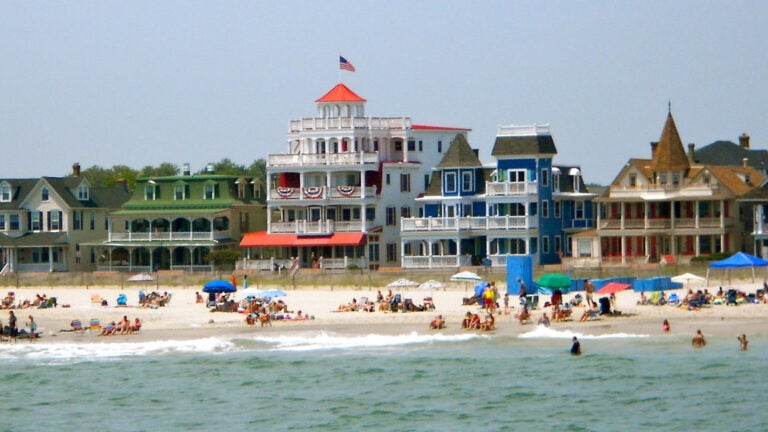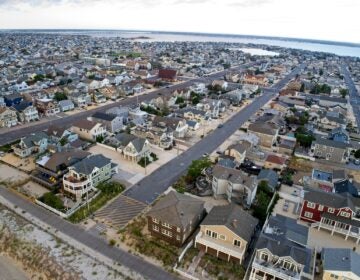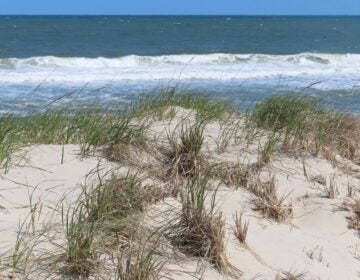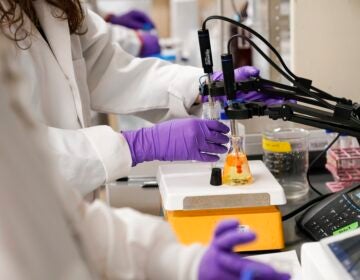Creeping salt water forces Cape May City to consider more desalination
Shallow private wells near Shore are under special threat as seas rise.

Cape May City (smallbones from Creative Commons (CC0 1.0)
Salt water is continuing to creep into private wells and some deep aquifers on the Cape May peninsula, forcing some homeowners to consider other sources of drinking water, and prompting Cape May City to plan a sharp increase in capacity for a plant that desalinates sea water, state and local officials said.
Although salinity levels in about two dozen “sentinel” wells — those designed to provide an early warning of salt water intrusion — are still below limits set by the state Department of Environmental Protection, coastal communities are being urged to consider their options for ensuring that drinking water supplies are sustainable in the long term.
The increasing salinity that has contaminated the peninsula’s public and private wells for decades is driven mostly by the withdrawal of fresh water reserves, allowing more salt water to intrude into aquifers, and worsened by sea-level rise, experts said. They urged private well owners and public water suppliers to consider the long-term future of water supply in an area that has become a poster child for dealing with salt water intrusion.
“Any coastal community should be looking at a wide variety of alternatives,” said Jeffrey Hoffman, the state geologist, in an interview with NJ Spotlight. He urged operators of public water systems to consider moving wells away from underground salt water, interconnecting with neighboring water systems, or installing desalination plants, such as that — the first in New Jersey — built by the City of Cape May in the mid-1990s.
But the best solution to a threatened water supply is water conservation, Hoffman said. He cited, as an example, the City of Cape May’s efforts to urge its many visitors to save water, in a town whose population surges from a year-round 3,800 to some 45,000 in the summer season.
Coastal private wells at risk
Private wells near the coast are especially at risk, Hoffman said, because they are susceptible to changes in surface water, which could be contaminated with seawater as oceans rise.
“Homes near the shoreline, if they have shallow aquifers, do have the threat of becoming salty especially if they are in a development or if there are many homes pumping water,” he said. “If you have a very shallow well near the coast, and sea level were to rise three feet, that would be additional pressure sending sea water” toward parts of the aquifer where fresh water has been withdrawn.
The vulnerability of shallow wells near the coast is shown by the DEP’s testing of its “sentinel” wells. Those near the shore have contained chloride levels more than twice the level found in inland wells, Hoffman said. Any private well owner facing the same problem may simply have to drill a deeper well, at a cost of around $10,000, Hoffman said.
Seas at the Jersey Shore are expected to rise by up to 2.1 feet between 2000 and 2050 because of increasing ocean volumes and global ice melt, according to the Science and Technical Advisory Panel, a body set up by the DEP and Rutgers University last year.
The United States Geological Survey, which studied salt water intrusion on Cape May in the 1990s and 2000s, said that intrusion may become a problem for wells in shallow coastal aquifers, or in aquifers where the withdrawals lower the water level below sea level. In 1992, the agency said more than 100 domestic wells and about 20 public and industrial wells on Cape May had been abandoned because of salt water intrusion.
Impact on other Shore towns
Coastal communities further north, from Stone Harbor to Atlantic City, are unlikely now to be affected because they take water from the 800-Foot Sand, a major aquifer that’s expected to supply fresh water for “hundreds of years,” the agency said in a statement.
The main threat to drinking water in coastal areas is not sea-level rise but over-pumping of aquifers that are then vulnerable to salt water intrusion, officials said. Demands on those aquifers are increased by coastal development that brings more people and, by building more houses, roads and driveways, reduces the area of pervious surface that allows aquifers to recharge when it rains.
“Every time they put another basement down or a roof down, there’s a little bit more of an area where the rain can’t get into that aquifer,” said Carl Behrens, superintendent of the City of Cape May Water and Sewer Department. “That probably has pretty close to the same effect as our pumping rates.”
The ongoing construction of houses in flood-prone coastal areas is one of the issues being considered by the DEP in its current regulatory review known as NJ PACT, or Protecting Against Climate Threats.
Behrens’s current focus of concern is the increasing salinity of the Cohansey aquifer, from which the city draws about a third of its water through one well — Well 5. Three others are sunk into the salty 800-Foot Sand, whose water is treated in the city’s desalination plant, which started operation in 1998.
Recent testing of the Cohansey well showed it exceeding a health guideline for sodium set by the U.S. Environmental Protection Agency, but any exceedance is brought down by blending the water with that produced by the desalination plant, Behrens said.
“It’s safe, but it’s getting to a point where it is concerning,” he said.
Increase capacity of desalination plant by 50%
That’s why Behrens wants to see the plant’s capacity increased by at least 50% to 3 million gallons a day, with the Cohansey well kept in reserve, to ensure the city will reliably be able to supply water to its residents and many more tourists, who are arriving in increasing numbers as the season gets longer with the warming climate.
But the proposed capacity increase is on hold while the Cape May City Council considers what it can afford in a budget that, like that of every other state and local government, has been devastated by the coronavirus pandemic.
“COVID-19 just has everybody shellshocked, and I think council, rightfully so, is being very careful about any capital expenditures,” Behrens said. “We have to make the money before we go and spend it.”
Still, the expansion will have to be made eventually because existing capacity won’t always meet demand, he said.
“Cape May is in a terrific position but it’s not a matter of them deciding if they want to spend the money. They’ve got to decide when they want to spend the money,” he said. “It’s inevitable; we’re going to have to expand.”
By building the existing plant for $5 million, the City of Cape May was an early adopter of desalination as a means of sustaining its drinking water supply. The initiative has worked for more than 20 years but now needs to be expanded to meet increasing demand, said Ed Mahaney, the former mayor who oversaw the plant’s construction.
State, federal funding
Ratepayers did face higher bills to pay for the new plant, but not significantly so, because state and federal funding paid most of the bill, he said.
When the town studied its water-supply options in the mid-1990s, four of seven alternatives involved sinking more wells into the Cohansey aquifer, all of which would have “exponentially” increased salt water intrusion, Mahaney said. That forced the eventual decision to rely largely on desalinated water.
“Today, two-thirds of the water comes from the desal plant, so when that Well 5 goes, we’ve got to have enough capacity,” he said.
In the island community of Wildwood, north of Cape May, concern about salt water intrusion led water managers in the 1960s to install the nation’s first aquifer storage and recovery system, in which fresh water from the mainland is injected to island wells outside the tourist season.
The system continues, and there’s no salt water problem with either the monitoring wells or the “production” wells that supply water to the public, said Michael McIntyre, director of Wildwood Water Utility.
But the apparent stability of current supply doesn’t stop him from considering other options to sustain supply in the future, such as the desalinization plant that he has discussed with water managers at neighboring Lower Township. “You never know, you still have to explore your options and you have to be ready,” he said.

Get daily updates from WHYY News!
WHYY is your source for fact-based, in-depth journalism and information. As a nonprofit organization, we rely on financial support from readers like you. Please give today.




